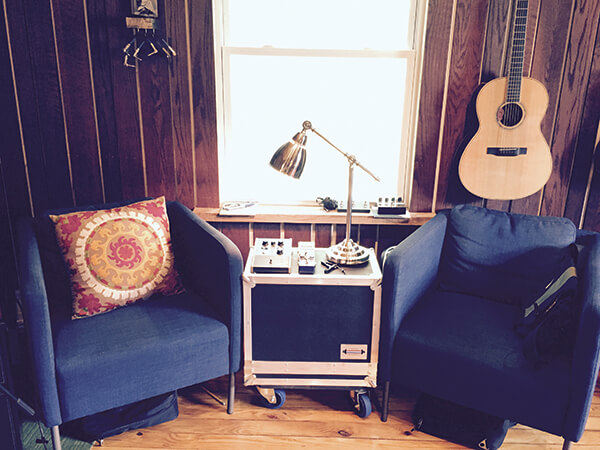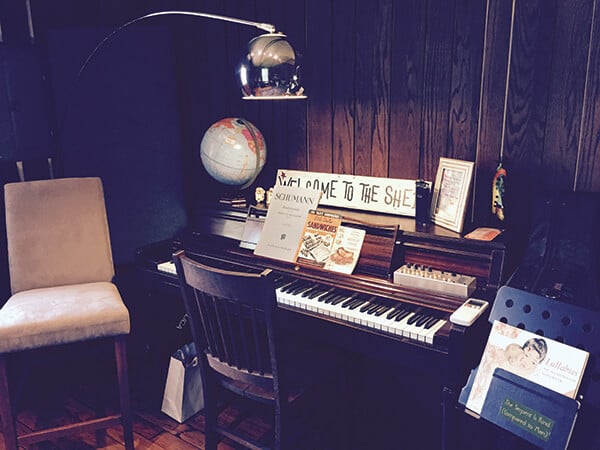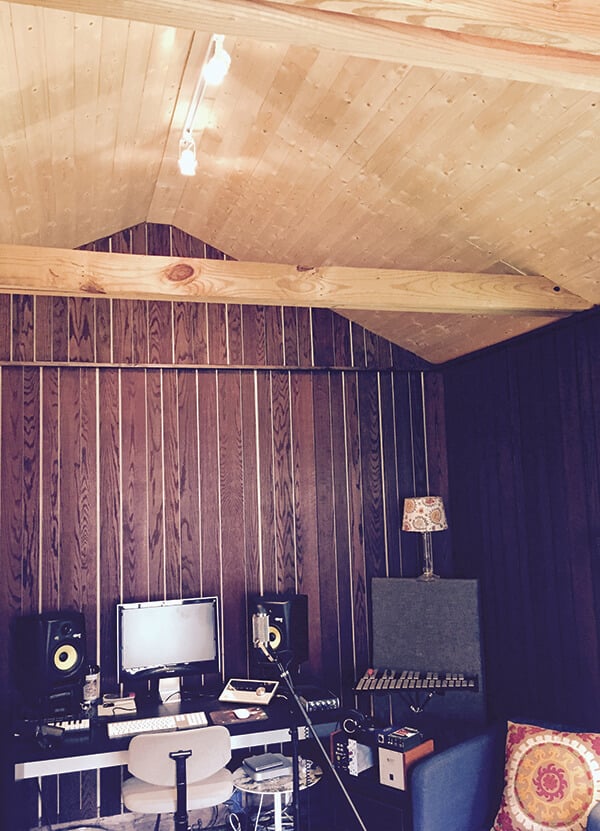I’m a jazz saxophone player that doesn’t really like to play jazz all that much. I like singer-songwriters, soul music, rock bands, weird string bands, folk music, and electro pop. Cannonball Adderley, Jan Garbarek, and Ornette Coleman got me into the saxophone. Singers and songwriters got me into songs and records. But I never wanted to be a Clarence Clemons. I like being a part of a section. Most bands can’t afford to tour with a horn section, so I got into making sections happen in the studio. Enough people in my widening circle of musical colleagues (most recently The Mountain Goats, Hiss Golden Messenger, Bhi Bhiman) wanted me to put together woodwind parts for their records that I thought it would be worth the investment to build a studio where I focused on just that. So that’s what I did.

My wife and I bought a house in downtown Raleigh, NC two years ago that had a detached workshop in the backyard, and I renovated the crap out of it. I ran super clean power to it, installed a powerful mini-split heat pump/AC system, insulated it with dense rockwool, replaced the window and door, installed tongue and groove flooring on the vaulted ceiling, created a slatted wall to give the room some acoustical dimension, and finished the existing yellow pine floors. To give it a more cabin-like vibe, I built a small front porch with an overhang. The total project took about six months, though it probably could have gone faster if we hadn’t had a baby in the middle of that, and we didn’t exceed our budget of $10,000 by all that much.
Why is this an economically viable route to take, you ask? Normally, if a woodwinds player gets called to do a session in a studio they would get paid a rate either based on the amount of time spent or by the song. If I’m in a professional studio for a full day, I usually get between $200-300. A totally fair rate. The idea behind my studio is that I could charge similar rates for my services as an instrumentalist, but the artist/producer wouldn’t have to be spending their valuable studio time for my portion of the project. I don’t feel like I’m pulling money away from established studios because, in a lot of cases, an artist would either farm it out to someone like me or just not have horns/ woodwinds at all. With my arrangement, people can still have affordable, orchestrated instruments without impacting their budget too much.

Are you wondering about quality, now? Are you skeptical as to whether or not I can produce studio quality recordings in my shed? Well, I was worried about that too. Obviously, the quality of the recordings matters a lot. I didn’t want people to be able to tell that I wasn’t in a million dollar studio. My approach to achieving this was simple: after playing in some amazing studios I figured out which sound I liked the best, made a note of what the signal chain was (mic, preamp, converter), and then bought that stuff.
Now, this equipment gets expensive. I figured I’d start out with a few choice things and go from there. I like ribbon mics on my saxes, so I have a decent AEA ribbon mic, paired up with a Great River preamp, and sent into an Apogee interface with decent converters. Those items cost me roughly $3,800. I steer the ship with Pro Tools and a souped-up Mac Mini. And it all works great. I recommend also having a good dynamic mic, like an SM7 or an RE20, and a midrange large-diaphragm condenser mic like a Mojave MA-300. As far as preamps, start a 500 series rack. Great quality stuff that you can add on to later at a reasonable cost. Not everyone is willing to invest in quality home studio gear, so if you do, you might even be able to make some money renting it out.

I buy pretty much everything on an online store’s credit card, and keep an eye out for zero interest specials. The minimum payments will have the balance paid off in the zero- interest time frame. Financing $5,000 over 24 months is only around 200 bucks a month, which can be covered with just one session. That’s how I deal with equipment expenses.
The renovation expenses were a combination of gifted money, savings, and credit cards. All of which are paid off now. Other than my monthly credit card bill for equipment and maybe a slightly inflated electric bill, the studio doesn’t really have any overhead.
Though there’s an economic reason for having this studio, my priority is having a space where I can be creative on my own terms. This is not a luxury item for a full-time musician. It is a necessity. When I’m not working on a woodwind part for someone, I can write, practice, and experiment. The more I’m able to do those things for myself, the better I’ll be at producing great work for other people. Creativity and consistency are the greatest assets for an instrumentalist and session musician. But if you can also have a kick-ass little studio in your backyard, all the better.

ABOUT THE AUTHOR
Matt Douglas is a trained jazz saxophone and woodwinds player who floats between the jazz world and the world of singer/songwriters. He continues to live and work in Raleigh, North Carolina as a multi-instrumentalist, teacher, and songwriter. For more info visit www.mattdouglasmusic.com.
